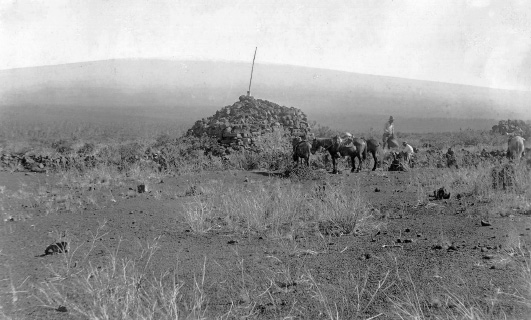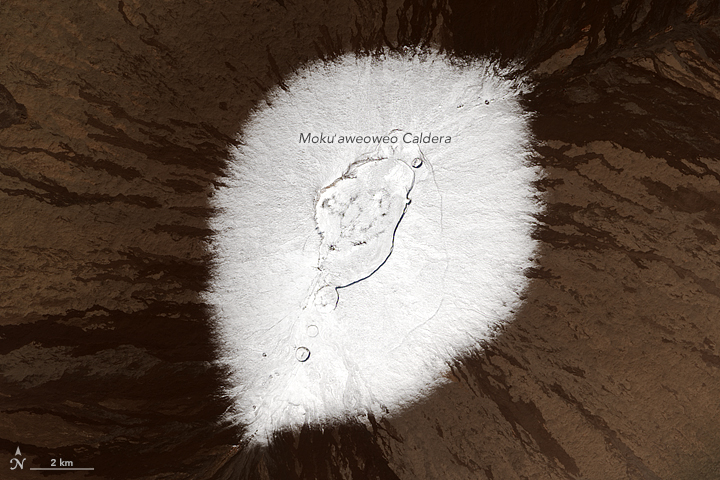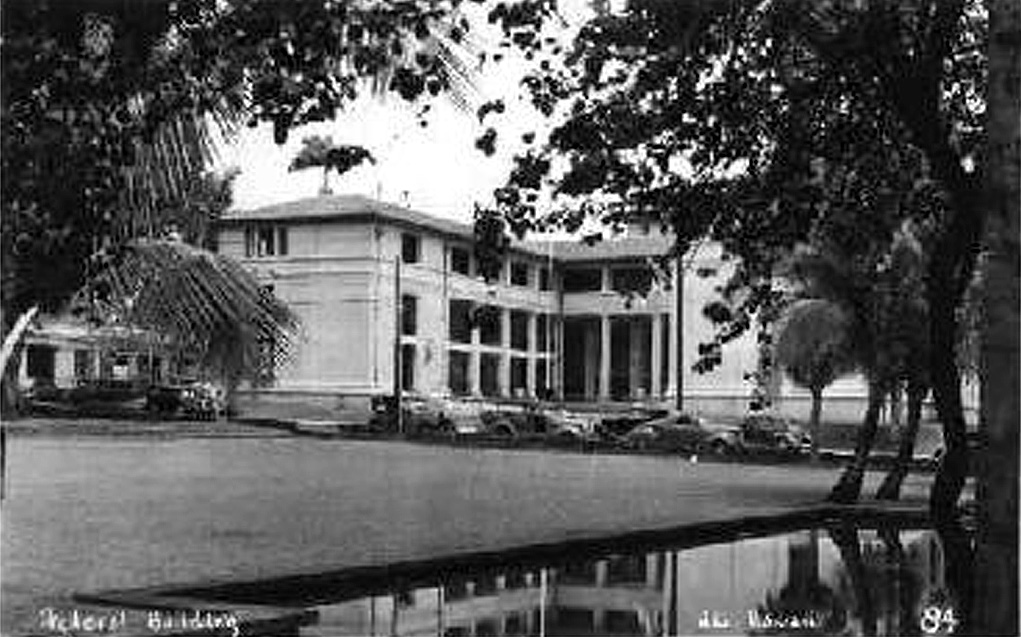|
Hilo
Hilo () is the largest settlement in and the county seat of Hawaii County, Hawaiʻi, United States, which encompasses the Island of Hawaiʻi, and is a census-designated place (CDP). The population was 44,186 according to the 2020 census. It is the fourth-largest settlement in the state of Hawaiʻi, the largest settlement in the state outside of Oahu, and the largest settlement in the state outside of the Greater Honolulu Area. Hilo is in the District of South Hilo. The city overlooks Hilo Bay and has views of two shield volcanoes, Mauna Loa, an active volcano, and Mauna Kea, a dormant volcano. The Hilo bayfront has been destroyed by tsunamis twice. The majority of human settlement in Hilo stretches from Hilo Bay to Waiākea-Uka, on the flanks of the volcanoes. Hilo is home to the University of Hawaii at Hilo, ʻImiloa Astronomy Center, as well as the Merrie Monarch Festival, a week-long celebration, including three nights of competition, of ancient and modern hula that ... [...More Info...] [...Related Items...] OR: [Wikipedia] [Google] [Baidu] |
Hawaii (island)
Hawaii is the List of islands of the United States by area, largest island in the United States, located in the Hawaii, state of Hawaii, the southernmost state in the union. It is the southeasternmost of the Hawaiian Islands, a chain of volcanic islands in the Pacific Ocean, North Pacific Ocean. With an area of , it has 63% of the Hawaiian archipelago's combined landmass. However, it has only 13% of the archipelago's population. The island of Hawaii is the third largest island in Polynesia, behind the North Island, North and South Islands of New Zealand. The island is often referred to as the Island of Hawaii or Hawaii Island to distinguish it from the state. It is also referred to as The Big Island, due to its size relative to the other islands. In Hawaiian language, Hawaiian, the island is sometimes called ''Moku o Keawe''. The word ''keawe'' has several meanings. One definition, "southern cross", is said to be the name of an ancient chief. Another definition is "the bearer". ... [...More Info...] [...Related Items...] OR: [Wikipedia] [Google] [Baidu] |
Liliuokalani Park And Gardens
Pagoda and Torii in Liliu'okalani Gardens Liliuokalani Park and Gardens is a park with Japanese gardens, located on Banyan Drive in Hilo on the island of Hawaii. The park's site was donated by Queen Liliuokalani, and lies southeast of downtown Hilo, on the Waiakea Peninsula in Hilo Bay. Much of the park now consists of Edo-style Japanese gardens, built 1917-1919, and said to be the largest such gardens outside Japan. The gardens contain Waihonu Pond as well as bridges, ponds, pagodas, statues, torii, and a Japanese teahouse. Included in the park is the small island called Moku ola, (also known as Coconut Island), connected to the park by a footbridge. It is a good place for a picnic, and some limited swimming. The name Moku ola literally means "island of life" in the Hawaiian language, since it was the site of an ancient temple dedicated to healing. There is a stone tower on the east side of the island which is the remnant of the old footbridge which was destroyed by a tsun ... [...More Info...] [...Related Items...] OR: [Wikipedia] [Google] [Baidu] |
Hilo Bay
Hilo Bay is a large bay located on the eastern coast of the island of Hawaii. Description The modern town of Hilo, Hawaii overlooks Hilo Bay, located at . North of the bay runs the Hamakua Coast on the slopes of Mauna Kea, and south of the bay is the Puna district on the slopes of Mauna Loa. The area just inland from the bay is the Hilo district, divided into north and south Hilo within the County of Hawaii. Banyan Drive runs through Liliʻuokalani Gardens near downtown Hilo at the edge of the bay. History The ancient Hawaiian name for the village on the bay was Waiākea. After being surveyed in 1825 by Charles Robert Malden of , it was called Byron's Bay for captain George Byron, 7th Baron Byron. The coral reef on the eastern side of the bay is called Blonde Reef for the ship. The first breakwater across the bay was first started in 1908 under contract to Engineer Delbert Metzger. It was extended in 1911, and completed in 1929. The small island Moku Ola (now called Co ... [...More Info...] [...Related Items...] OR: [Wikipedia] [Google] [Baidu] |
Hawaii County, Hawaii
Hawaiʻi County (; officially known as the County of Hawaiʻi) is a county in the U.S. state of Hawaii in the Hawaiian Islands. It is coextensive with the Island of Hawaiʻi, often called the "Big Island" to distinguish it from the state as a whole. The 2020 Census population was 200,629. The county seat is Hilo. There are no incorporated cities in Hawaiʻi County (see list of counties in Hawaii). The Hilo Micropolitan Statistical Area includes all of Hawaiʻi County. Hawaiʻi County has a mayor–council form of government. In terms of geography, Hawaiʻi County is the most expansive county in the state and the most southerly county in the United States. The mayor of Hawaiʻi County is Kimo Alameda, who took office in 2024. Legislative authority is vested in the nine-member Hawaiʻi County Council. Hawaiʻi County is one of seven counties in the United States to share the same name as the state they are in (the other six are Arkansas County, Idaho County, Iowa Coun ... [...More Info...] [...Related Items...] OR: [Wikipedia] [Google] [Baidu] |
Mauna Loa
Mauna Loa (, ; ) is one of five volcanoes that form the Island of Hawaii in the U.S. state of Hawaii in the Pacific Ocean. Mauna Loa is Earth's largest active volcano by both mass and volume. It was historically considered to be the largest volcano on Earth until the submarine mountain Tamu Massif was discovered to be larger. Mauna Loa is a shield volcano with relatively gentle slopes, and a volume estimated at , although its peak is about lower than that of its neighbor, Mauna Kea. Lava eruptions from Mauna Loa are silica-poor and very fluid, and tend to be non-explosive. Mauna Loa has likely been erupting for at least 700,000 years, and may have emerged above sea level about 400,000 years ago. Some dated rocks are 470,000 years old. The volcano's magma comes from the Hawaii hotspot, which has been responsible for the creation of the Hawaiian Island chain over tens of millions of years. The slow drift of the Pacific Plate will eventually carry Mauna Lo ... [...More Info...] [...Related Items...] OR: [Wikipedia] [Google] [Baidu] |
Federal Building, United States Post Office And Courthouse (Hilo, Hawaii)
The Federal Building, U.S. Post Office and Courthouse in Hilo, Hawaii is a former courthouse of the United States District Court for the District of Hawaii. Completed in 1917 and expanded in the 1930s, the building was listed in the National Register of Historic Places in 1974. Building history Prior to the History of Hawaii, annexation of the islands by the United States in 1898, Hilo was a thriving educational and commercial center on Hawaii, the largest of the Hawaiian Islands. Flourishing agricultural enterprises were served by railroads and harbors that facilitated trade with both the continental United States and East Asia. Postal services in Hilo commenced in 1858. When the Hawaiian Islands became a territory of the United States in 1900, officials wanted to expand postal and court facilities for the second-largest city in the territory. By 1913, the Hilo Board of Trade and the territory's governmental representative secured US Dollar, US$200,000 for a federal building. N ... [...More Info...] [...Related Items...] OR: [Wikipedia] [Google] [Baidu] |
Mauna Kea
Mauna Kea (, ; abbreviation for ''Mauna a Wākea''); is a dormant Shield volcano, shield volcano on the Hawaii (island), island of Hawaii. Its peak is above sea level, making it the List of U.S. states by elevation, highest point in Hawaii and List of islands by highest point, the island with the second highest high point, behind New Guinea, the world's largest tropical island with multiple peaks that are higher. The peak is about higher than Mauna Loa, its more massive neighbor. Mauna Kea is unusually Topographic prominence, topographically prominent for its height: its prominence from sea level is List of mountain peaks by prominence, 15th in the world among mountains, at ; its prominence from under the ocean is , rivaled only by Mount Everest. This Topographic prominence#Wet prominence and dry prominence, dry prominence is greater than Everest's height above sea level of , and some authorities have labeled Mauna Kea the tallest mountain in the world, from its underwater ba ... [...More Info...] [...Related Items...] OR: [Wikipedia] [Google] [Baidu] |
Waiākea-Uka
Waiākea-Uka (IPA:/'waj.ə.kei.ə.'u.kə/) is an ancient subdivision (''ahupuaa, ahupuaa'') in the Hilo District of the Hawaii (island), Big Island of Hawaii, located mauka (mountain-side) of the Waiakea, Hawaii, Waiākea ahupua'a; its location is on the lower flanks of the volcano Mauna Loa. Because of this, one meaning of the name 'Waiākea-Uka' can be translated from 'Olelo Hawai'i as '(the) mountain-side (of) Waiākea'. Many ahupua'a have this -uka appellation, as the directions 'mountain-side' and 'sea-side' (makai) are the two best ways of orientating something in space on any of the islands. History Waiākea-Uka marks the most mauka portion of human settlement in the Hilo district. Waiākea-Uka has many expensive houses, including a Swiss-style chateau. The area is home to many traditional agricultural hawaiian-style homes. As the area is mauka of Hilo Bay, there is no threat of tsunami; earthquakes are always a possibility anywhere on the island, and the area is currently t ... [...More Info...] [...Related Items...] OR: [Wikipedia] [Google] [Baidu] |
Hawaii
Hawaii ( ; ) is an island U.S. state, state of the United States, in the Pacific Ocean about southwest of the U.S. mainland. One of the two Non-contiguous United States, non-contiguous U.S. states (along with Alaska), it is the only state not on the North American mainland, the only state that is an archipelago, and the only state in the tropics. Hawaii consists of 137 volcanic islands that comprise almost the entire Hawaiian Islands, Hawaiian archipelago (the exception, which is outside the state, is Midway Atoll). Spanning , the state is Physical geography, physiographically and Ethnology, ethnologically part of the Polynesian subregion of Oceania. Hawaii's ocean coastline is consequently the List of U.S. states and territories by coastline, fourth-longest in the U.S., at about . The eight main islands, from northwest to southeast, are Niihau, Niihau, Kauai, Kauai, Oahu, Oahu, Molokai, Molokai, Lanai, Lānai, Kahoʻolawe, Kahoolawe, Maui, and Hawaii (island), Hawaii, a ... [...More Info...] [...Related Items...] OR: [Wikipedia] [Google] [Baidu] |
Rainbow Falls (Hawaii)
Rainbow (Waiānuenue) Falls is a waterfall located in Hilo, Hawaii. It is tall and almost in diameter. The falls are part of the Hawai'i State Parks. There is no fee to see the falls. At Rainbow (Waiānuenue) Falls, the Wailuku River rushes into a large pool below. The gorge is blanketed by lush, dense nonnative tropical rainforest and the turquoise-colored pool is bordered by beautiful, although nonnative, wild ginger. Monstera is also in abundance. The falls are accessible via Wailuku River State Park, Waiānuenue Avenue, coordinates , and are best seen from the park's viewing platform. Known in the Hawaiian language as Waiānuenue (literally "rainbow water"), the falls flows over a natural lava cave, the mythological home to Hina, an ancient Hawaiian goddess. Rainbow Falls derives its name from the fact that, on sunny mornings around 10am, rainbows can be seen in the mist thrown up by the waterfall. See also * List of waterfalls * List of Hawaii waterfalls * List of H ... [...More Info...] [...Related Items...] OR: [Wikipedia] [Google] [Baidu] |
Tsunami
A tsunami ( ; from , ) is a series of waves in a water body caused by the displacement of a large volume of water, generally in an ocean or a large lake. Earthquakes, volcanic eruptions and underwater explosions (including detonations, landslides, glacier calvings, meteorite impacts and other disturbances) above or below water all have the potential to generate a tsunami. Unlike normal ocean waves, which are generated by wind, or tides, which are in turn generated by the gravitational pull of the Moon and the Sun, a tsunami is generated by the displacement of water from a large event. Tsunami waves do not resemble normal undersea currents or sea waves because their wavelength is far longer. Rather than appearing as a breaking wave, a tsunami may instead initially resemble a rapidly rising tide. For this reason, it is often referred to as a tidal wave, although this usage is not favoured by the scientific community because it might give the false impression of ... [...More Info...] [...Related Items...] OR: [Wikipedia] [Google] [Baidu] |






